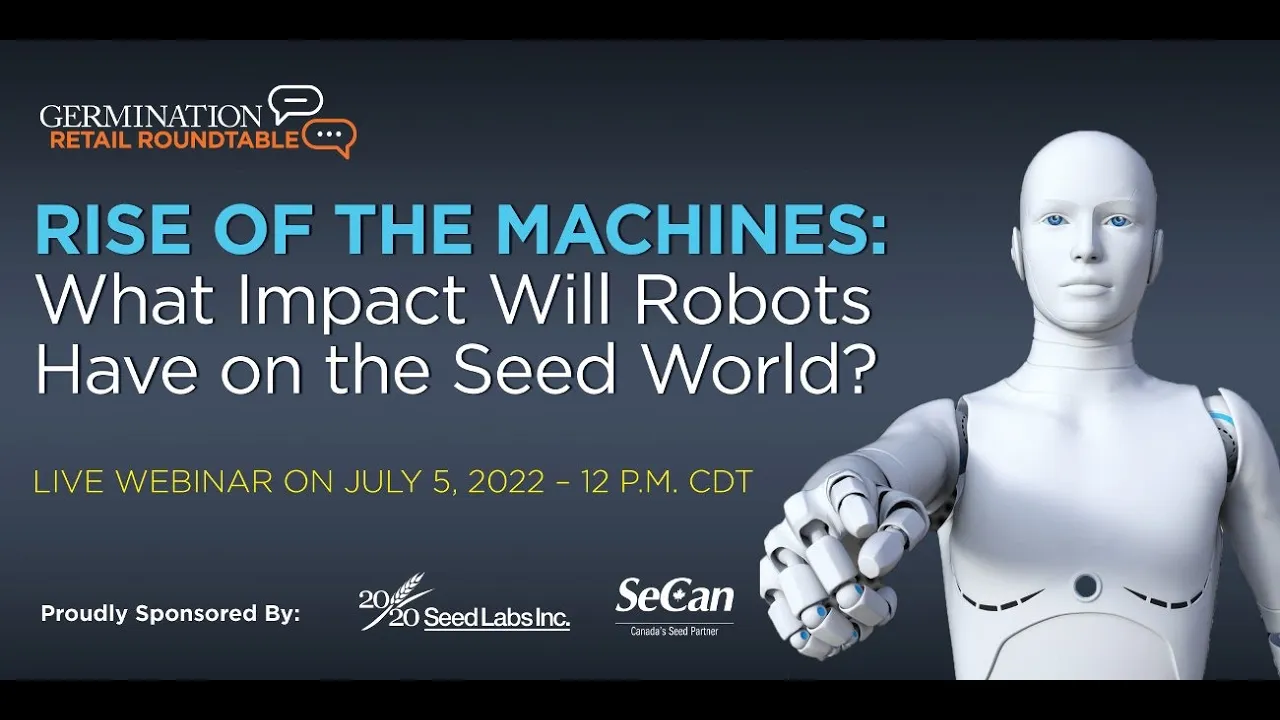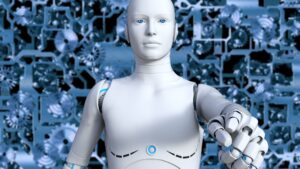We find out from three experts about how machine learning, artificial intelligence and robotics are making for a more sustainable industry.
 How dominant is machine learning becoming on the world ag stage?
How dominant is machine learning becoming on the world ag stage?
Everywhere I go in the world, whether it’s for small landholders or large landholders, the opportunity for robotics, machine learning and even AI is growing exponentially. We come from the era of muscle, which is an exchange of calories of horses and oxen and human beings to make food. We’re living in an era of machines now, but concentrating on how to do things more agronomically sound. Agriculture must be infinitely sustainable, and the only way we can feed the planet is through intensive, sustainable intensification.
Why does the discussion about robotics in ag seem to be accelerating?
While the use of chemistry in agriculture goes back a very long time, it really began in the 60s, 70s and 80s. The real big change in agriculture happened in the mid-90s, when we had genetically engineered herbicide tolerant crops ushering in the era of Agriculture 4.0. This helped shape what is beginning to happen in what I call Agriculture 5.0, which is really the convergence of technology, all slamming together without isolating one technology over the other.
What are some examples?
There’s no separation today of GPS, auto steer, sensor technology, precision ag, artificial intelligence, even augmented intelligence and data. They all come together in convergence. What’s driving convergence is Moore’s Law, which refers to Gordon Moore’s perception that the number of transistors on a microchip doubles every two years, though the cost of computers is halved. Moore’s Law states that we can expect the speed and capability of our computers to increase every couple of years, and we will pay less for them.
The more data and connectivity we have, the more data we generate, and the more we need algorithms to deal with this vast amount of data.
How does this technology convert to the field?
Robotics is important because it plays a role when the Three Ds are present — that is, when things are dangerous, dirty and dull. Robotics really fit in here. If robots can do work in seed production, then it frees up some of the labour and that labour allows us to have a better family life. I’m thinking of technology like OMNiPOWER, formerly called DOT.
Thoughts on the future?
I’ve never met a farmer yet who wants to spray on more chemical or use more fertilizer. I think the future of food could be organic, but it would have to be genetically engineered organic (GEO) because when you think about fighting disease or insects on a crop, genetic engineering is key.
What are some challenges you see coming?
Key considerations for robotics and agriculture, of course, are safety and perception. In-between field transport is still an issue. Insurance, of course, needs to be dealt with, and regulations about how we deal with the regulations of robots and agriculture is not yet resolved. Do we put them in the same classification as a Tesla? Or can we put those regulations under farm implement regulations?
 Rick, as a seed grower, how have you seen technology evolve?
Rick, as a seed grower, how have you seen technology evolve?
We farm roughly 6,000 acres. Most of it is devoted to seed production, and we also run a retail seed business as well out of our location. I remember the first combine that I operated when I started my farming venture, actually. We’ve come a long way since. My father’s family came to Manitoba at the turn of the 19th century from Ontario, and they were farming over 2,000 acres with horses.
When he was a young boy, he drove the horse and wagon of grain to the elevator. He did that when he was 10 years old. The last year that he was with us, he actually drove a GPS-guided swather. We’ve been farming on our land for roughly 95 years, and we’ve been involved in the seed industry for roughly 70 years. The technological change has been immense.
You have the honour of being a part of one of Manitoba’s newest projects in regard to machine learning and artificial intelligence. In June, the Enterprise Machine Intelligence and Learning Initiative (EMILI), announced a partnership with Farm Credit Canada and the renaming of its innovation farm to Innovation Farms Powered by AgExpert. Your farm will be one of these innovation farms and will be part of a larger network of farms that will use new technology, knowledge and labour to address the changing needs of the agriculture industry. What are some ways these technologies have transformed your operation?
Our seed plant was built around the year 2000. It has a monitoring system that monitors all the operations of our plant and lets us know when a piece of equipment is not functioning optimally. A lot of technology comes together in our treating facility; we can put four individual products onto a pound of seed that’s weighed as it goes into a mixing drum. There’s a main control panel that lets us actually put the amount of MLs per kilogram of seed we want to apply to different products, and when the treating job is done, we can actually export the data right to our office where they can access the information of how many kilograms were treated, and what products were put on it.
Are you developing yield maps using machine learning?
Definitely. It’s been over 25 years since we actually generated our first yield map. Our first output from a lot of our yield maps 25 years ago was tied back to drainage. Jump ahead a quarter century and look at a map generated on the same field. You’re going to see far more detail due to using many layers of technology to come up with the result you see in our final yield map, which shows the results of very site-specific fertilization that we’re now able to do based on the productivity of the year before.
What are some examples of exciting new technologies coming out of the EMILI partnership?
We’re working on a new next-generation weather station with EMILI, kind of like a mobile agronomist. This particular station has cameras on it and can detect through algorithms insects that are in the crop. It’s taking relative humidity readings as the crop grows larger, and it can start developing modeling to know if we’re going to have to apply fungicides on a particular field. We’ve got many more deliverables rather than just moisture and wind.
We’re also working on a protein tester with John Deere, which is allowing us to geo reference protein as well as yield on a combine. This opens up huge amounts of information that can give us many more deliverables as we move ahead. For example, right now we can layer a yield and protein map to determine if we’re over fertilizing. We can determine protein levels on the go from plot to plot.
As Rob was talking about, we can reduce the amount of fertilizers and other inputs on farmland with machines which give us the ability to learn what’s happening in the field in real time. With the help of EMILI, we have some two-acre plots and what we’re doing there is actually physically imaging the crop. We’re building algorithms for cameras to be able to detect differences between crops in order to identify weeds. This further builds our algorithm library, where we can start looking at doing weed control in very site-specific ways.
 What’s a big challenge in this area?
What’s a big challenge in this area?
As Rob was saying, there’s a huge investment being made in this technology, and for growers to use it successfully they have to be on the right side of the technology curve. Around 80 per cent of these technologies today are not being used to for what they’re really designed for. An initiative like the one EMILI is undertaking is going to be very helpful in helping solve this.
What is EMILI?
The Enterprise Machine Intelligence and Learning Initiative was founded in 2016. Our goal was really to work on a lot of the different things that we’ve already discussed, and work to grow the digital ag ecosystem in Manitoba and across the Prairies. Back in 2016, artificial intelligence was really just getting going, but it was becoming more and more common in conversation. The founding board of EMILI wanted to ensure that people and producers and businesses were well prepared to take advantage of what AI was going to enable in agriculture and across the agri-food value chain.
There’s often a fear that these kinds of technologies can replace humans in the workforce. What’s the reality?
Technology allows us to do more and in a more productive and sustainable way, and it really always leads to requiring more people because we’re able to achieve more. We’ll need more capital to be able to grow these businesses and scale them in Canada. That’s another key priority of EMILI — that the innovation and intellectual property that gets created here in Canada finds the right capital and fit to be able to keep growing in Canada and have those benefits accrue here at home.
Our vision is to be an accelerator of the digital agriculture economy. Innovation Farms, which Rick is involved in, is something we’re really excited about. We’re partnering with Rutherford Farms to fully sensor that 5,500-acre farm, telling the story about new technologies and increased productivity and sustainability made possible as a result of the new technologies being used there, as well as providing a testing and validation space for new technologies in a full-scale commercial operation.
How can people find out more?
Every year EMILI hosts a conference called Agriculture Enlightened (agenlightened.ca), coming up on Oct. 20 in Winnipeg. It’s going to be a great opportunity for producers, processors, and people in the investment space to learn more through innovative discussions with others in the space. Our goal is to put more information into people’s hands to help them understand how best to leverage, mobilize and monetize data, keeping in mind that data creators should always be the data owners throughout the whole value chain.



 How dominant is machine learning becoming on the world ag stage?
How dominant is machine learning becoming on the world ag stage? Rick, as a seed grower, how have you seen technology evolve?
Rick, as a seed grower, how have you seen technology evolve? What’s a big challenge in this area?
What’s a big challenge in this area?









